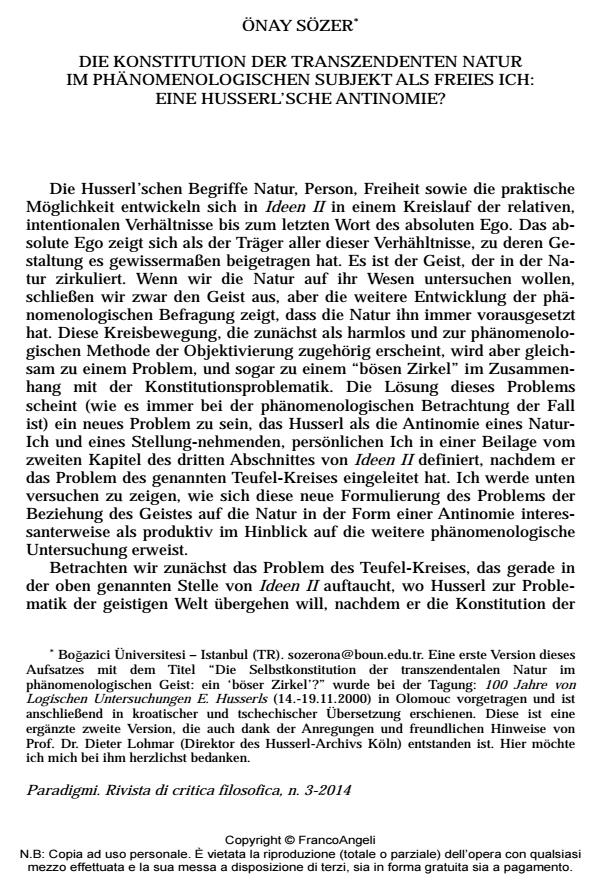The Constitution of the Transcendental Nature in the Phenomenological Subject as a Free I: a Husserlian Antinomy?
Journal title PARADIGMI
Author/s Onay Sozer
Publishing Year 2015 Issue 2014/3
Language Deutch Pages 13 P. 111-123 File size 70 KB
DOI 10.3280/PARA2014-003008
DOI is like a bar code for intellectual property: to have more infomation
click here
Below, you can see the article first page
If you want to buy this article in PDF format, you can do it, following the instructions to buy download credits

FrancoAngeli is member of Publishers International Linking Association, Inc (PILA), a not-for-profit association which run the CrossRef service enabling links to and from online scholarly content.
Husserl’s phenomenological constitution begins with the material and empirical nature (perception) and goes through the experience of body and spirit to the person (as attitude of a free self), but only over a breach. Tha antinomical structure of the coexistence of an empirical and a spiritual freedom necessitates this situation: freedom is based on a contradiction, of which the contradicted sides imply and reproduce each other beyond a simple mutual negation. According to the Ideas II, the transcedent nature of human freedom means only a staging of the material world of perception and of the practical freedom by means of the logical-spiritual freedom, which is a phenomenological riddle.
Keywords: Transcendence, person, body, comprehension, freedom, antinomy.
Onay Sozer, Die konstitution der transzendenten natur im phänomenologischen subjekt als freies ich: eine husserl’sche antinomie? in "PARADIGMI" 3/2014, pp 111-123, DOI: 10.3280/PARA2014-003008